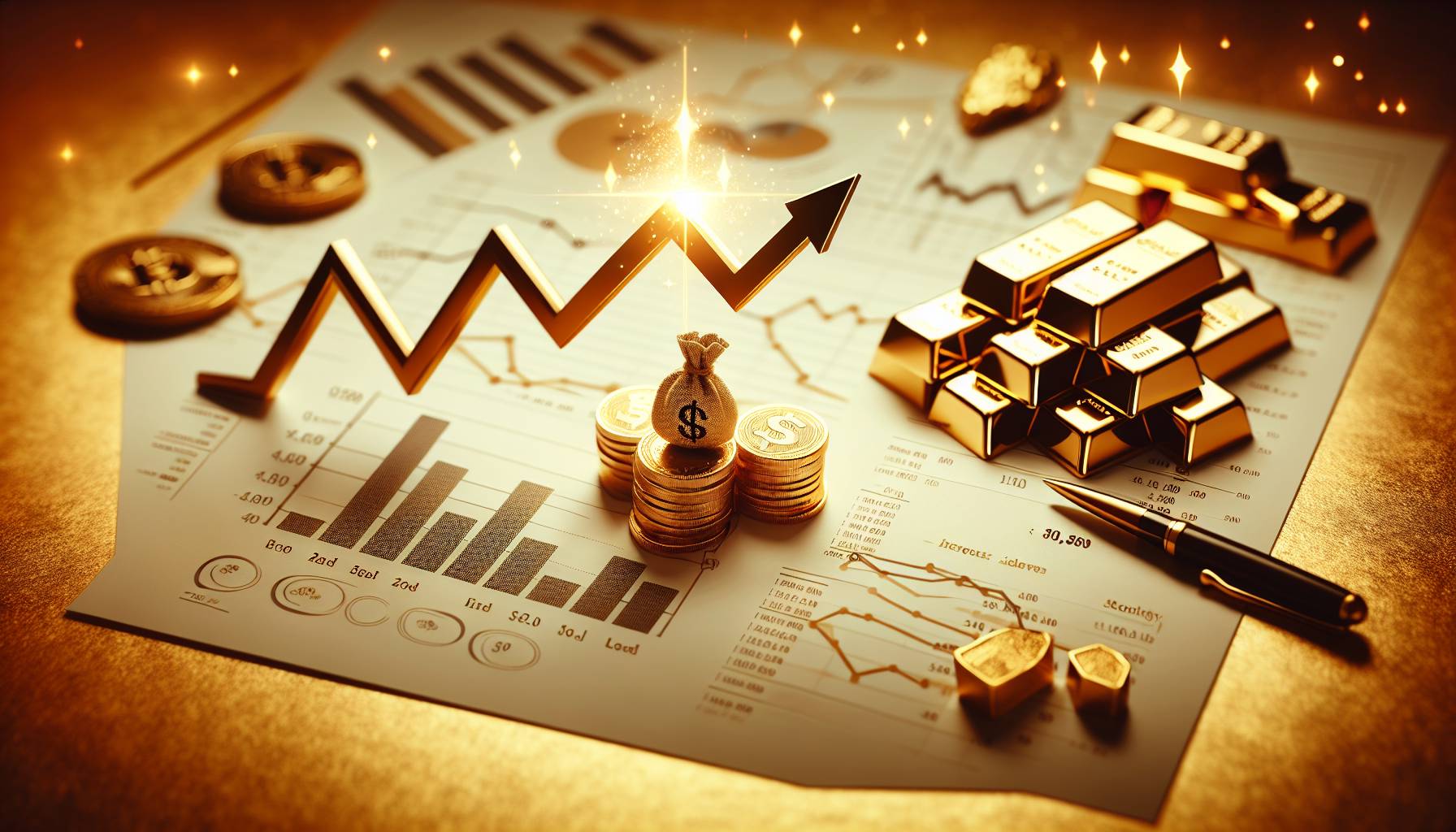Impact of global trade tensions on gold prices
Gold prices have experienced significant volatility as a result of ongoing global trade tensions. These tensions have been primarily driven by the trade disputes between major economies, notably the United States and China. As these two economic powerhouses engage in a series of tariff exchanges and negotiations, the uncertainty surrounding the outcome has led investors to seek safe-haven assets, with gold being a primary choice.
The fluctuating nature of trade talks has caused sharp movements in gold prices. When negotiations appear to be progressing positively, there is often a dip in gold prices as investor confidence in the global economy strengthens. Conversely, when talks break down or new tariffs are announced, gold prices tend to rise as investors flock to the perceived safety of the precious metal.
Moreover, the impact of these trade tensions is not limited to the direct participants. Other economies, including Australia, have felt the ripple effects, influencing their own economic stability and, consequently, their gold markets. The interconnectedness of global trade means that any disruption can have far-reaching consequences, further contributing to the volatility of gold prices.
In addition to the direct impact of tariffs and trade negotiations, the broader economic implications, such as shifts in currency values and stock market fluctuations, also play a role in influencing gold prices. As these factors continue to evolve, they add layers of complexity to the already volatile gold market.
Analysis of tariff announcements by President Trump
The tariff announcements by President Trump have played a pivotal role in shaping the dynamics of the gold market. These announcements often come with little warning, creating an environment of unpredictability that significantly impacts investor behavior. The imposition of tariffs on goods from key trading partners, particularly China, has led to retaliatory measures, escalating trade tensions and contributing to economic uncertainty.
Each announcement of new tariffs or the escalation of existing ones tends to trigger immediate reactions in financial markets. Investors, wary of the potential negative impact on global trade and economic growth, often turn to gold as a hedge against the anticipated market volatility. This flight to safety is driven by concerns over the potential for tariffs to slow down economic activity, disrupt supply chains, and increase costs for businesses and consumers alike.
Furthermore, the rhetoric surrounding these tariff announcements often exacerbates market fears. Statements from the Trump administration regarding the potential for further tariffs or the success of trade negotiations can lead to swift changes in market sentiment. This has resulted in a pattern where gold prices experience spikes following tariff announcements, as investors seek to protect their portfolios from the anticipated economic fallout.
In addition to the immediate market reactions, the longer-term implications of these tariffs are also a concern for investors. The potential for prolonged trade disputes raises questions about the stability of the global economic landscape, prompting a sustained interest in gold as a long-term investment. As tariffs continue to be a tool of economic policy, their influence on gold prices remains a critical factor for investors to monitor.
Future outlook for gold market amidst uncertainties
The future outlook for the gold market amidst ongoing uncertainties remains complex and multifaceted. As global trade tensions persist, the gold market is expected to continue experiencing volatility. Investors are likely to maintain a keen interest in gold as a hedge against economic instability, driven by the unpredictable nature of international trade policies and geopolitical developments.
In the short term, gold prices may fluctuate in response to any new developments in trade negotiations or changes in tariff policies. The market’s sensitivity to such announcements means that even minor shifts in diplomatic relations or economic indicators can lead to significant price movements. This environment of uncertainty is likely to sustain the demand for gold as a safe-haven asset.
Looking further ahead, the potential for a resolution to trade disputes could lead to a stabilization of gold prices. However, the path to such resolutions is fraught with challenges, and the timeline remains uncertain. In the meantime, other factors such as interest rate policies, inflation expectations, and currency fluctuations will also play crucial roles in shaping the gold market’s trajectory.
For Australian investors, the interplay between global trade dynamics and domestic economic conditions will be particularly important. Australia’s economic ties with both the United States and China mean that any shifts in trade policies could have direct implications for the local gold market. Additionally, the performance of the Australian dollar against other major currencies will influence gold prices domestically, adding another layer of complexity to investment decisions.
While the gold market faces a landscape of uncertainties, its role as a protective asset in times of economic turmoil is likely to remain significant. Investors will need to stay informed about global economic trends and be prepared to adapt their strategies as new information emerges. The ability to navigate this volatile environment will be key to capitalizing on opportunities within the gold market.
impact of global trade on gold prices
Gold prices have experienced significant volatility as a result of global trade uncertainties. The ongoing trade tensions between major economies have created an unpredictable environment for investors, leading to fluctuations in gold prices. As a safe-haven asset, gold often sees increased demand during times of economic instability, which can drive prices up.
Trade disputes, particularly those involving large economies like the United States and China, have a direct impact on investor sentiment. When tariffs are imposed or trade negotiations stall, markets react with caution, prompting investors to seek refuge in gold. This increased demand can lead to price surges, as seen in recent months.
Moreover, the interconnectedness of global markets means that trade disruptions can have ripple effects across various sectors, further influencing gold prices. For instance, supply chain disruptions can affect the availability of gold, while currency fluctuations can alter its relative value.
Investors in Australia and beyond are closely monitoring these developments, as the global trade landscape continues to evolve. Understanding the impact of these factors is crucial for making informed investment decisions in the gold market.
effects of US tariffs on the gold market
The imposition of US tariffs has had a profound impact on the gold market, influencing both investor behavior and market dynamics. Tariffs, particularly those targeting major trading partners, have heightened economic uncertainty, prompting investors to reassess their portfolios. As a result, gold, known for its stability during turbulent times, has become an attractive option for those seeking to hedge against potential market downturns.
When tariffs are announced, they often lead to immediate reactions in financial markets, including fluctuations in currency values and stock indices. These movements can increase the appeal of gold as a non-correlated asset, offering a buffer against volatility. For Australian investors, the effects of US tariffs are felt not only through direct trade relationships but also through their impact on global economic conditions.
Additionally, tariffs can lead to inflationary pressures, as the cost of imported goods rises. This scenario can further bolster gold’s appeal, as it is traditionally viewed as a hedge against inflation. Investors may increase their gold holdings to protect their purchasing power, driving demand and potentially pushing prices higher.
In this complex environment, staying informed about tariff developments and their potential repercussions is essential for investors. By understanding how these policies influence the gold market, investors can better position themselves to capitalize on opportunities and mitigate risks.

